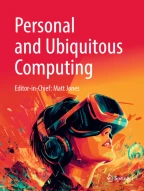Abstract
Based on the self-balance of free-floating two-wheel self-balancing pendulum robot system, an optimal path planning of two-wheel self-balancing pendulum robot is proposed. Firstly, the corner trajectory of the two-wheel self-balancing pendulum robot is parameterized by quantum particle swarm optimization (QPSO), and the objective function is designed according to the base attitude and the control accuracy of the robot’s terminal position and attitude. The optimal path planning problem of the two-wheel self-balancing pendulum robot system is transformed into the optimization problem of the non-linear system. Quantum particle swarm optimization (QPSO) algorithm is used to solve the non-linear optimization problem, and the goal of optimal path planning is achieved. The experimental results show that the proposed method can converge to the global optimal value with fast convergence speed and less adjustment parameters. The planned joint path satisfies the range of corner, angular velocity, and angular acceleration. The joint path is smooth and suitable for the control of two-wheel self-balancing pendulum robot.
Similar content being viewed by others
References
Dai F, Gao X, Jiang S, Guo W, Liu Y (2015) A two-wheeled inverted vehicle pendulum robot with friction compensation. Mechatronics 30:116–125
He C, Huang K, Chen X, Zhang Y, Zhao H (2018) Transportation control of cooperative double-wheel inverted pendulum robots adopting udwadia-control approach. Nonlinear Dynamics 91(4):2789–2802
Lee JH, Shin HJ, Lee SJ, Jung S (2013) Balancing control of a single-wheel inverted pendulum system using air blowers: evolution of mechatronics capstone design. Mechatronics 23(8):926–932
Yue M, Wei X, Li Z (2014) Adaptive sliding-mode control for two-wheeled inverted pendulum vehicle based on zero-dynamics theory. Nonlinear Dynamics 76(1):459–471
Xu JX, Guo ZQ, Lee TH (2013) Design and implementation of a takagi–sugeno-type fuzzy logic controller on a two-wheeled mobile robot. IEEE Trans Ind Electron 60(12):5717–5728
Zhou YS, Wang ZH (2016) Robust motion control of a two-wheeled inverted pendulum with an input delay based on optimal integral sliding mode manifold. Nonlinear Dynamics 85(3):2065–2074
Huang J, Ri MH, Wu D, Ri S (2018) Interval type-2 fuzzy logic modeling and control of a mobile two-wheeled inverted pendulum. IEEE Trans Fuzzy Syst 26(4):2030–2038
Fukushima H, Muro K, Matsuno F (2015) Sliding-mode control for transformation to an inverted pendulum mode of a mobile robot with wheel-arms. IEEE Trans Ind Electron 62(7):4257–4266
Fukushima H, Kakue M, Kon K, Matsuno F (2013) Transformation control to an inverted pendulum for a mobile robot with wheel-arms using partial linearization and polytopic model set. IEEE Trans Robot 29(3):774–783
Lee H, Jung S (2012) Balancing and navigation control of a mobile inverted vehicle pendulum robot using sensor fusion of low cost sensors. Mechatronics 22(1):95–105
Xu JX, Guo ZQ, Lee TH (2014) Design and implementation of integral sliding-mode control on an underactuated two-wheeled mobile robot. IEEE Trans Ind Electron 61(7):3671–3681
Yang C, Li Z, Li J (2013) Trajectory planning and optimized adaptive control for a class of wheeled inverted pendulum vehicle models. IEEE Transactions on Cybernetics 43(1):24–36
Huang J, Ding F, Fukuda T, Matsuno T (2013) Modeling and velocity control for a novel narrow vehicle based on mobile wheeled inverted pendulum. IEEE Trans Control Syst Technol 21(5):1607–1617
Cui R, Guo J, Mao Z (2015) Adaptive backstepping control of wheeled inverted pendulums models. Nonlinear Dynamics 79(1):501–511
Yoshida K, Sekikawa M, Hosomi K (2016) Nonlinear analysis on purely mechanical stabilization of a wheeled inverted pendulum on a slope. Nonlinear Dynamics 83(1–2):905–917
K Xia, Z Liu. Renal segmentation algorithm combined low-level features with deep coding feature[C] 27th IEEE International Conference on Robot and Human Interactive Communication, (RO-MAN 2018)
Jiang Y, Chung F-L, Wang S, Deng Z, Wang J, Qian P (2015) Collaborative fuzzy clustering from multiple weighted views. IEEE Transactions on Cybernetics 45(4):688–701
Xia K-j, Yin H-s, Zhang Y-d (2019) Deep semantic segmentation of kidney and space-occupying lesion area based on SCNN and ResNet models combined with SIFT-flow algorithm. J Med Syst 43:2.https://doi.org/10.1007/s10916-018-1116-1
Jiang Y, Chung F-L, Ishibuchi H et al (2015) Multitask TSK fuzzy system modeling by mining intertask common hidden structure. IEEE Transactions on Cybernetics 45(3):548–561
Funding
This work was financially supported by Science and Technology Innovation Talents Special Foundation of Harbin (no. 2014RFXXJ051); open research project of Anhui simulation design and modern manufacture engineering technology research center (no. SGCZXYB02); Science and Technology Innovation Talents Special Foundation of Harbin (outstanding academic leaders) (no. 2014RFXXJ051).
Author information
Authors and Affiliations
Corresponding author
Additional information
Publisher’s note
Springer Nature remains neutral with regard to jurisdictional claims in published maps and institutional affiliations.
Rights and permissions
About this article
Cite this article
Qian, Q., Wu, J. & Wang, Z. Optimal path planning for two-wheeled self-balancing vehicle pendulum robot based on quantum-behaved particle swarm optimization algorithm. Pers Ubiquit Comput 23, 393–403 (2019). https://doi.org/10.1007/s00779-019-01216-1
Received:
Accepted:
Published:
Issue Date:
DOI: https://doi.org/10.1007/s00779-019-01216-1
